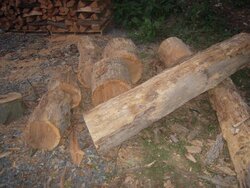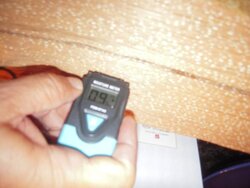I was hoping you guys could help me sort out some of the observations I have made on 3 different red oak trees. The first one was standing dead but still had all of its bark. The 2nd tree was also standing dead with no bark and all and cracks forming all the way to the ground. The last tree was cut live and bucked but not split last summer.
When giving the smell test to the 3 different trees both standing dead trees had a pleasant Oak smell, the live cut 14 month old tree smells awful when split. The standing dead trees also weigh considerably less then the live cut tree with the bark free tree being the most dry. The live cut tree is obviously wet even in the small 3-4 inch logs. I will actually be surprised if it is a dry a year from now.
So red oak needs roughly 2 years to season and both standing dead trees have wood that is more dry then the 14 month old oak. Am I safe to assume it will be ready to burn in 8-12 months?
When giving the smell test to the 3 different trees both standing dead trees had a pleasant Oak smell, the live cut 14 month old tree smells awful when split. The standing dead trees also weigh considerably less then the live cut tree with the bark free tree being the most dry. The live cut tree is obviously wet even in the small 3-4 inch logs. I will actually be surprised if it is a dry a year from now.
So red oak needs roughly 2 years to season and both standing dead trees have wood that is more dry then the 14 month old oak. Am I safe to assume it will be ready to burn in 8-12 months?



